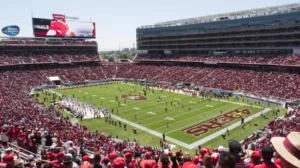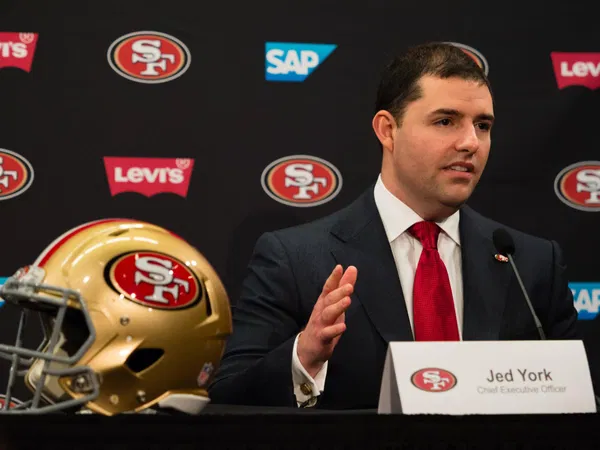2016 saw the Bay Area stuck in a duality of sorts one of celebration and consequence. Super Bowl 50 lit up Levi’s Stadium with enough fireworks to light up the entire stretch from Super Bowl City in downtown San Francisco all the way to Santa Clara. But on the other side of the jubilation, reality resided one of millions spent and millions lost.
The financial dynamics between San Francisco and Santa Clara during Super Bowl 50 were quite different. While San Francisco hosted many events, it ended up spending nearly $5 million in taxpayer money for security and public services, with little to no reimbursement. Despite some political pushback, the NFL did not cover these costs, leaving experts questioning the previously projected economic benefits.
In contrast, Santa Clara, where the actual game took place, had an approach rooted in strategy and realism. The city spent about $3.5 million on preparations and services but secured a reimbursement agreement, recovering $3.4 million and even generating a net revenue of $744,000. Now, a decade later, that old narrative threatens to repeat itself, just on an even larger scale.
The 2026 FIFA World Cup is set to bring six high-profile matches to Levi’s Stadium. The promise? A global stage, packed stadiums, and an economic windfall. The reality? A $50 million price tag, with FIFA willing to cover only $13 million, thus thrusting a staggering $37 million gap for the San Francisco 49ers and the Bay Area Host Committee (BAHC).
When Governor Gavin Newsom rolled out his May budget, there was no relief for the World Cup. “Given the pressure on the budget from Trump administration budget chaos, and the need to protect critical state programs, the Governor did not include state funding for World Cup 2026 support in the May Revise proposal,” said his spokesperson, Robert Salladay. The state pledged to help “with appropriate existing resources,” but the message was clear: no direct funding, only logistical support. This leaves the local organizers grappling with a sizeable shortfall.

The 49ers are stepping forward, but cautiously. Brian Brokaw, a team spokesperson, told city officials they will pay approved Santa Clara public safety costs for the games they’re hosting, if necessary. Yet, that carefully chosen phrase approved costs raises eyebrows. Santa Clara’s Measure J explicitly forbids public funds being used for stadium events. So, what counts as an approved cost? It’s a gray area city leaders worry about.
To mitigate the strain, the Santa Clara City Council approved a plan earlier this year allowing the BAHC to collect FIFA’s $13 million contribution. The 49ers promised to cover any additional expenses beyond that amount. Still, the arrangement is a patchwork solution, leaving room for financial risk if costs climb higher than expected.
The Host Committee is optimistic, painting the World Cup as a regional economic boon. They cite projections from Boston Consulting Group, which estimate the event could generate over $500 million in economic impact across nine Bay Area counties. We are securing significant private investment, and we are excited to help generate an estimated $500M+ in economic impact for the Bay Area, the BAHC stated, highlighting partnerships with Boston Consulting Group, EA Sports, and Kaiser Permanente. But how much these partners are actually putting on the table remains a mystery.
On the national stage, organizers are pushing for $625 million in federal security funding, a figure that remains unapproved. Meanwhile, Santa Clara’s $50 million hosting budget pales next to Toronto’s eye-watering estimated $380 million for the same number of matches. The scale may be different, but the pressure is no less real.
With the June 15 budget deadline looming, the Bay Area’s World Cup plans hang in a delicate balance. Without more financial support, Jed York and the 49ers could face tough decisions, and the region might pay the price behind the scenes of a global spectacle yet again.
Culture, legacy & Jed York’s 2026 vision: Selling the Bay as a global experience
In February 2026, Super Bowl LX will take place. And six World Cup matches at Levi’s Stadium will follow a few months later. Each is massive on its own. All together? It’s a cultural and logistical Everest. According to Bay Area Host Committee President and CEO Zaileen Janmohamed, There’s something really exciting about it. There is this nervous energy. Some nights I sleep great. Some nights I do wake up and I’m like, oh my God, we have two of the world’s biggest sporting events coming to our market. I expect to have more nights of less sleep as we get closer. But then, after we’re done the World Cup, I will sleep.
Every World Cup game has been marketed by the host committee as a Super Bowl-level event. Thus, the Bay Area will effectively host seven Super Bowls in 2026. Janmohamed and a local group traveled to New Orleans to observe Super Bowl procedures in preparation. What they observed shaped the plan: the Bay Area will market its diversity, innovation, and tech-forward vibe rather than emphasising walkability like New Orleans.
The Bay has nine counties, and every single county has a different culture and ecosystem and something that they bring, Janmohamed said. The goal is to provide tourists with a carefully crafted regional experience. From the tech campuses of Silicon Valley to the grapes of Napa. It’s not even about the game at that point; it’s about culture and it’s bringing all of those things into that experience versus just the game itself, she added.
The 49ers, led by Jed York, are essential to this pitch not only as stadium hosts but also as brand ambassadors for an area attempting to export its identity. The Host Committee has relied on high-tech storytelling, with York supporting the endeavour. The committee had a sneak peek at an interactive presentation powered by Meta at Super Bowl LIX earlier this year. And it was nicknamed a tech petting zoo. Its goal was to make spectators feel awed as soon as they landed. That’s the dream: goosebumps from curb to kickoff.
Three airports are set to accommodate the arrival of fans. The public safety protocols established for Super Bowl 50 and other significant events serve as a proven framework. However, the global fan base remains an unpredictable factor. FIFA supporters expect international standards and efficient mass transit systems. This situation presents both a challenge and an opportunity to elevate the Bay Area back into the global limelight.
As a mother of two, Janmohamed perceives events through the lens of her sons. I can only observe the reactions of my children — their eyes widen… These are experiences that people cherish for many years. You recall when your city hosted an Olympic Games, a World Cup, or a Super Bowl. Those memories linger, igniting either a passion for sports or a desire to pursue something entirely different. That is my hope. Whether it is a $500 million dream or a $37 million burden, one fact remains clear: in 2026, all attention will be directed towards the Bay, with Jed York taking a prominent role.



